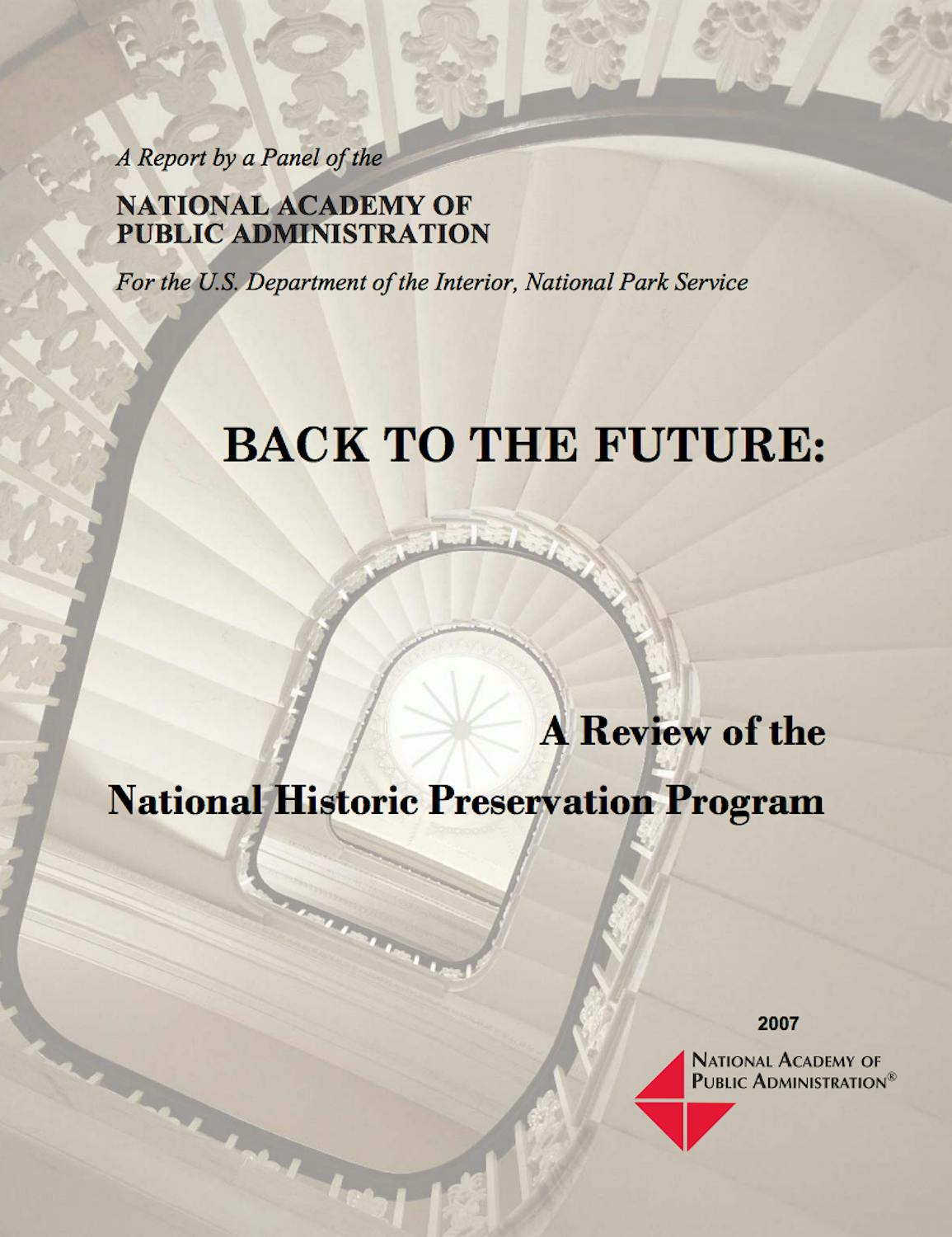
Back to the Future: A Review of the National Historic Preservation Program
The Academy was asked to conduct an independent review of the National Historic Preservation program for the National Park Service. The National Historic Preservation program is not a traditional “program,” but a continually evolving partnership among state and local governments, tribes, property owners and the private sector, working in concert with the National Park Service, the Advisory Council on Historic Preservation and other federal agencies.
Click the button below to view the View Study Report.
View ReportKey Findings
The Academy Panel overseeing this effort finds that the ambitious vision the National Historic Preservation Act set forth more than four decades ago is largely being realized. Far beyond “saving old buildings,” historic preservation has become a primary driver of economic development in hundreds of communities. Each year, historic preservation leverages billions of dollars in private investment, which revitalizes downtowns, generates jobs, creates affordable housing, spawns small businesses and expands property tax rolls. The Panel recognizes that increased workloads are straining the resources of state and tribal historic preservation offices and the National Park Service. To increase the benefits of the National Historic Preservation program, the Panel suggests improvements to build capacity, enhance performance and strengthen national leadership.
Recommendations
Department of the Interior (DOI)
- The Panel recommends that DOI, in consultation with NPS, request funding and FTE increases in Fiscal Year 2009 and beyond to address past workload increases and redress, at least in part, the significant decline in inflation adjusted funding.
National Park Service
The Panel recommends that NPS, in consultation with DOI and ACHP, as appropriate:
- Lead an inclusive planning process for a high profile celebration of the 50th Anniversary of the National Historic Preservation Act.
- Convene national conferences (with action agendas) on sensitive and emerging issues, including performance measurement.
- Develop educational materials that highlight the benefits of state historic preservation rehabilitation tax credits and other incentives for state and local political leaders.
- Encourage and assist federal agencies that own historic properties to be better stewards.
- Work with national partners to develop a high profile national award program to honor and reward best practices by federal agencies, SHPOs, THPOs and CLGs.
- Provide global leadership to strengthen international exchanges on preservation best practices.
- Take maximum advantage of information technologies by negotiating an umbrella contract to help states digitize historic records and by completing the redesign of NPS’s website.
- Work to strengthen professionalism in the historic preservation field.
- Engage SHPOs and THPOs to develop agreement on performance criteria that better reflect workload, performance, and outcomes and develop guidelines to implement Tier III of the HPF apportionment formula.
- Assess SHPO and THPO performance at least every five years and provide on-site technical assistance to at least five state and tribal grantees each year.
- Develop and deliver additional training courses and technical materials on critical issues.
- Create an NPS-tribal working group to draw lessons from the past decade and recommend strategies to strengthen THPO capacity, improve performance, ensure accountability commensurate with funding, and engage tribes more fully.
- Make consolidated comparisons of grantees’ performance publicly available.
Advisory Council on Historic Preservation (ACHP)
The Panel recommends that ACHP:
- Perform a workload analysis to compare THPO and SHPO workloads associated with Section 106 reviews and evaluate the resource implications.
- Develop a performance measurement system to provide regular feedback to federal agencies on their compliance with and good faith implementation of Section 106.
- Ensure that national programmatic agreements are regularly reviewed to ensure satisfactory performance.
Office of Management and Budget (OMB)
- The Panel recommends that OMB form a “community of interest” among federal program managers who administer block grant and formula grant programs to learn from each other how to improve accountability, measure results, and continuously improve performance.
